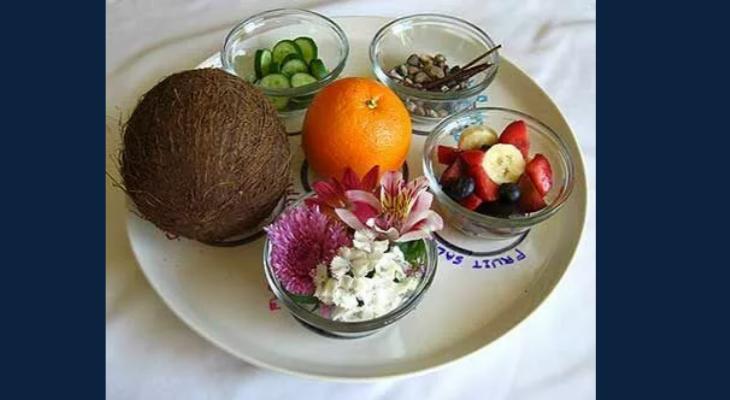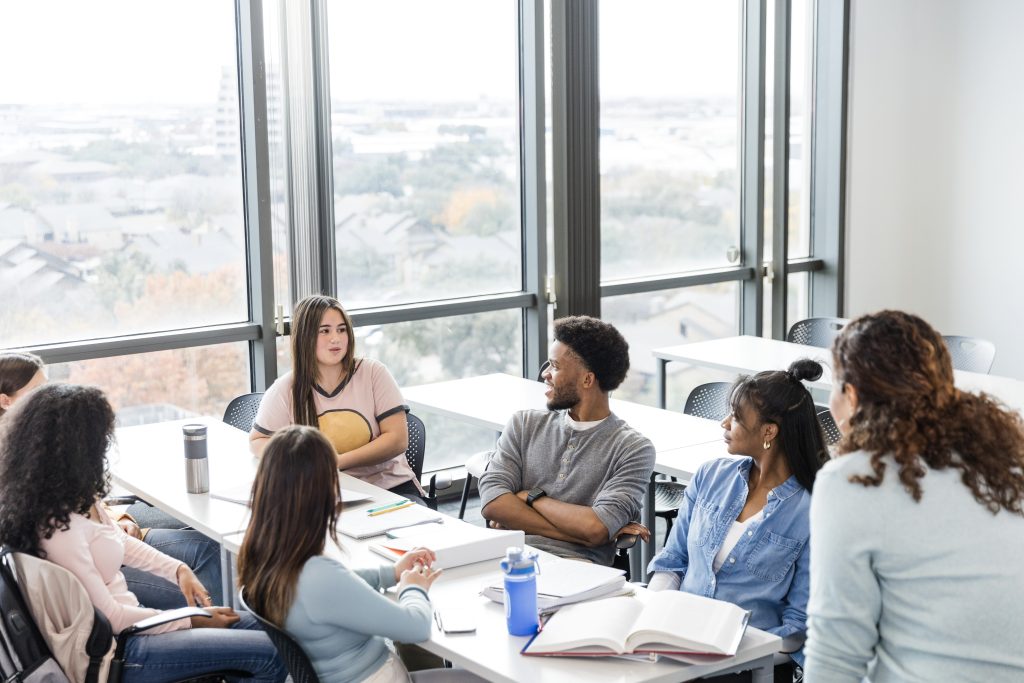What do K-12 Students Need to Learn about Religious Diversity?
January 24, 2022

There is a broad consensus among scholars, educators, and policy makers that the academic study of religion should be a key component of K-12 education. If our students are to be truly educated – and empowered to participate in civic life – they need a rich understanding of religious diversity. Unfortunately, not all Americans are aware of this consensus. Too many still mistakenly believe it is unconstitutional for public schools to offer courses on comparative religion. But educators across the board agree: effective teaching about religious diversity is essential to K-12 education, and to the health of our multicultural democracy.
The question still stands, however: What do we mean by “effective teaching” in this context? What do K-12 students need to learn about religious diversity?
As director of the Religious Worlds of New York summer institute for teachers, I have been working for over a decade to encourage a shift from the study of “world religions” to the study of “lived religion” in K-12 schools. This piece will explain what I mean by lived religion, and give a brief example – we’ll get to that orange soon enough! (The Religious Worlds institute will meet for sixth time in July 2022. Educators can visit our website to learn more and apply.)
Most K-12 religious studies curricula are structured by the “world religions” pedagogic model, which focuses on a fixed set of so-called “major” traditions, each of which is defined by a fixed set of ostensibly common features: its core doctrines or beliefs, its sacred texts, the life of its founder, and its major holidays or ritual practices. The religious lives of 1.7 billion Muslims, for example, may be reduced to a discussion of the Five Pillars of Islam, brief selections from the Qur’an, an account of the life of Mohammad, and a discussion of the customs surrounding the Hajj or Ramadan. This “dates and doctrines” approach to the study of religion does not convey the rich diversity within all faith traditions, or give students any real understanding of their neighbors’ religious lives.
By contrast, the study of “lived religion” takes the everyday practices, discourses, and experiences of specific faith communities as the starting point for any discussion of religious diversity. It recognizes that Muslims in Dakar and Detroit, for example, may have dramatically different understandings of the doctrines, rituals, and texts at the heart of their tradition. Indeed, members of a single congregation — men and women, gay and straight, Black and White, young and old — may have dramatically different views of their traditions. Rather than focusing on canonical doctrines, lived religion pedagogy explores a wide range of popular beliefs and practices — all the creative things that people do with their traditions.
Which brings us to the orange that may or may not have been on your neighbor’s seder plate (or yours!) during Passover last spring. If you have ever studied Judaism, you probably know that many Jews commemorate the ancient exodus from Egypt with a ritual meal known as the Passover seder. On a seder table one usually finds an ornate plate of five or six symbolic foods representing central themes of the Passover story — horseradish to mark the bitterness of slavery, a lamb shank bone to recall the paschal sacrifice on the eve of the exodus, and so on. The symbolism of these foods is specified clearly in the Talmud and other rabbinic texts. But what about that orange? And that coconut? Traditional Jewish texts have nothing to say about these foods, but there they are anyway in quite a few Jewish homes. What’s up with that?
Share
Related Articles
Higher Education
American Civic Life
Higher Education
Rather than focusing on canonical doctrines, lived religion pedagogy explores a wide range of popular beliefs and practices — all the creative things that people do with their traditions.
Rather than focusing on canonical doctrines, lived religion pedagogy explores a wide range of popular beliefs and practices — all the creative things that people do with their traditions.
Well, the story goes that sometime in the 1980s, an influential male rabbi told the Jewish feminist scholar Susannah Heschel that “A woman on the bimah [on the pulpit – i.e., a female rabbi] is like an orange on a seder plate [i.e., inappropriate and out of place].” The story is probably apocryphal, but it got around. And beginning in the 1990s, a growing number of Jews began putting oranges on their seder plates to mark their commitment to gender equality in Jewish life. Once this got going, other Jews began to use other foods to mark their concern with other social or ethical issues. An olive or an olive branch on the seder plate shows one’s support for a just peace between Israel and Palestine. A coconut shows support for LGBTQ Jews, who are too often forced to hide their true selves in Jewish communal life, like the rich meat locked within the hard shell of a coconut. Indeed, some Jews take this ritual innovation a subversive step further, by placing a small crust of bread on the seder plate to show support for LGBTQ Jews, despite (or because of) the clear prohibition on eating leavened bread during Passover, let alone putting it on the seder plate.
These are just a few examples of contemporary lived religion — of the extraordinary religious creativity we ignore when we limit discussions of religious diversity to the “dates and doctrines” of major traditions. There is nothing in canonical text or doctrine telling your Jewish neighbors to put an orange on their seder plate, or do yoga in synagogue, or for that matter give their daughter a Bat Mitzvah, but you can’t understand American Jewish life without understanding practices like these.
Which brings us back to our guiding question: What do K-12 students need to learn about religious diversity? It’s certainly helpful for students to learn about the doctrines and beliefs of diverse faith traditions, but much more than that they need to learn about the religious lives of their diverse neighbors. They need to know how their own experiences of American society may be radically different – and not so different at all – from the experiences of their peers living in different religious worlds.
They need to know how their own experiences of American society may be radically different – and not so different at all – from the experiences of their peers living in different religious worlds.
They need to know how their own experiences of American society may be radically different – and not so different at all – from the experiences of their peers living in different religious worlds.
The Religious Worlds institute thus trains K-12 teachers to teach about the everyday lives of diverse faith communities. Through the study of lived religion, we are helping young Americans develop a subtle, empathic understanding of religious diversity — the kind of understanding they need to be full participants in their pluralistic society.
The Religious Worlds of New York summer institute is a project of the Interfaith Center of New York, with support from the National Endowment for the Humanities. The next institute will meet from July 11-29, 2022, on the campus of Union Theological Seminary. Applications from educators who wish to participate are due by March 1. Visit www.religiousworldsnyc.org to learn all about the institute, including its innovative curriculum, careful COVID safety policies, and generous stipend for participants.
Dr. Henry Goldschmidt is a cultural anthropologist, community educator, interfaith organizer, and scholar of religion. He is currently the Director of Programs at the Interfaith Center of New York, where he develops programs for religious and civic leaders, K-12 teachers and students, social workers, police, and other audiences. Henry received his Ph.D. in anthropology from the University of California at Santa Cruz, and has taught religious studies and anthropology at Wesleyan University and elsewhere. He is the author of Race and Religion among the Chosen Peoples of Crown Heights, and other publications on American religious diversity and religious studies pedagogy.



